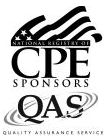Credit and Collection Guidebook (CPE Course)
CPE Credit: 14 hours
Course Type: Downloaded PDF materials with online test
Price (with PDF Textbook): $100
Course Description
Delayed payments by customers can seriously impact the finances of a business, but it is usually necessary to offer some level of credit to them. The Credit and Collection Guidebook shows how to strike a balance between more sales and a reasonable amount of bad debt. It does so by focusing on when to extend credit to questionable customers and how to select the best approach to collecting from late-paying customers. The discussion includes credit policies, credit monitoring, collection techniques, and the necessary controls, procedures, and reports to manage the process. The course also addresses more advanced concepts, such as credit and collection technology, the role of product and service improvements, and litigation tactics.
Author: Steven Bragg
Course Number: AC1007
Table of Contents
Chapter 1. Credit and Collection Operations
Chapter 2. Credit Procedures
Chapter 3. Credit Controls
Chapter 4. Collection Procedures
Chapter 5. Collection Controls
Chapter 6. The Credit Policy
Chapter 7. The Credit Application
Chapter 8. Customer Credit Ratings
Chapter 9. Ongoing Credit Monitoring
Chapter 10. Interpretation of Financial Statements
Chapter 11. Credit Risk Reduction
Chapter 12. Customer Billings
Chapter 13. Payment Handling
Chapter 14. Collection Tactics
Chapter 15. Payment Deductions
Chapter 16. Skip Tracing
Chapter 17. The Collection Agency
Chapter 18. Litigation and Bankruptcy Tactics
Chapter 19. Allowance for Doubtful Accounts
Chapter 20. Credit and Collection Technology
Chapter 21. Product and Service Improvements
Chapter 22. Credit and Collection Measurements
Chapter 23. Credit and Collection Laws
Learning Objectives
Specify the roles of the various employees of the credit and collection functions.
Identify the key procedures and forms needed to operate the credit function.
Cite the key controls needed for the credit function, and note what they are intended to accomplish.
State the key procedures and forms needed to operate the collection function, and the situations in which they are applicable.
Identify the key controls needed for the collection function.
Identify the main elements of a credit policy, and note the situations in which the policy may be changed.
Cite the contents and handling of a credit application, and note why this process is used.
State the methodologies available for developing credit ratings, and the situations in which credit rating systems can be used.
Itemize the events that can trigger a credit review.
Identify the methods that can be used to interpret the financial statements of a customer.
Cite the methods available for mitigating the risk associated with granting credit.
State the methods used to achieve an efficient and effective billing process.
Itemize the methods available for processing customer payments, and note who is involved in this activity.
Identify the primary tactics used to collect cash from customers, and note how these tactics can be improved.
Cite the management techniques used to deal with payment deductions made by customers.
State the sources of information used to locate customers via skip tracing, and the circumstances under which skip tracing might be necessary.
Specify the reasons for using a collection agency, when to use one, and the fee structures they employ.
Identify the reasons for using litigation, and the methods for collecting on favorable judgments.
Specify the classification of the allowance for doubtful accounts.
Cite the methods used to estimate the amount of the allowance for doubtful accounts, and how to account for this allowance.
State the types of technology that can support the credit and collection functions.
Identify the areas in which other parts of a company can cause collection problems, and how to mitigate these problems.
Identify the key measurements used to evaluate the performance of credit and collections, and note how these measurements should be used.
Cite the key laws that impact the credit and collection functions.
Level: Overview
Instructional Method: QAS Self-Study
NASBA Category: Accounting
Prerequisites: None
Advance Preparation: None
Latest Review Date: September 2023
Program Registration Requirements: Click on "Purchase Course" near the top of this page to pay for and access the course. You will then be able to download the course as a PDF file, then take an on-line examination, and then download a certificate of completion if you pass the examination.
Program Refund Policy: For more information regarding administrative policies concerning complaints, refunds, and other matters, see our policies page.
AccountingTools, Inc. is registered with the National Association of State Boards of Accountancy (NASBA) as a sponsor of continuing professional education on the National Registry of CPE Sponsors. State boards of accountancy have the final authority on the acceptance of individual courses for CPE credit. Complaints regarding registered sponsors may be submitted to the National Registry of CPE Sponsors through its website: www.nasbaregistry.org.
The NASBA sponsor identification number for Accountingtools, Inc. is 115881.
AccountingTools is an IRS Approved Continuing Education Provider. We are compliant with the requirements for continuing education providers (as described in sections 10.6 and 10.9 of the Department of Treasury’s Circular No. 230 and in other IRS guidance, forms, and instructions). Our IRS Approved Continuing Education Provider number is 72821.


